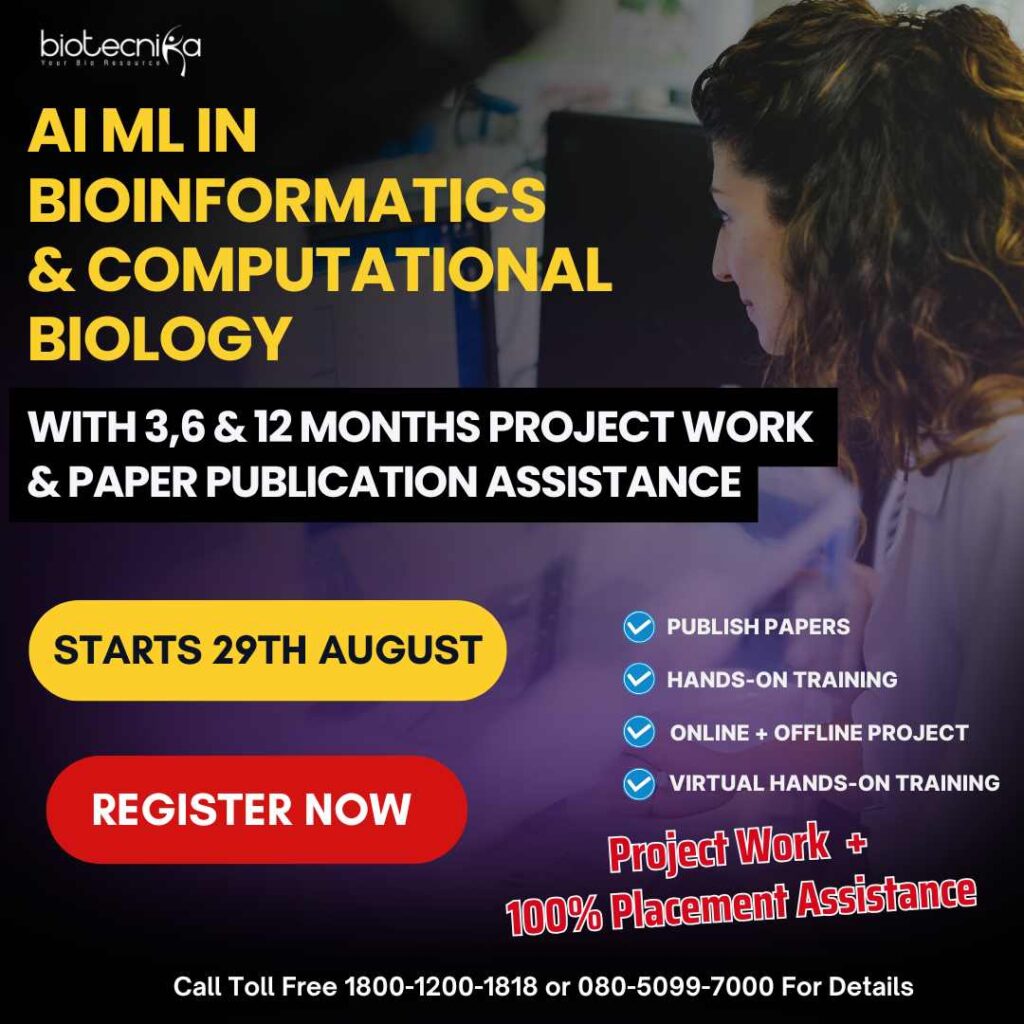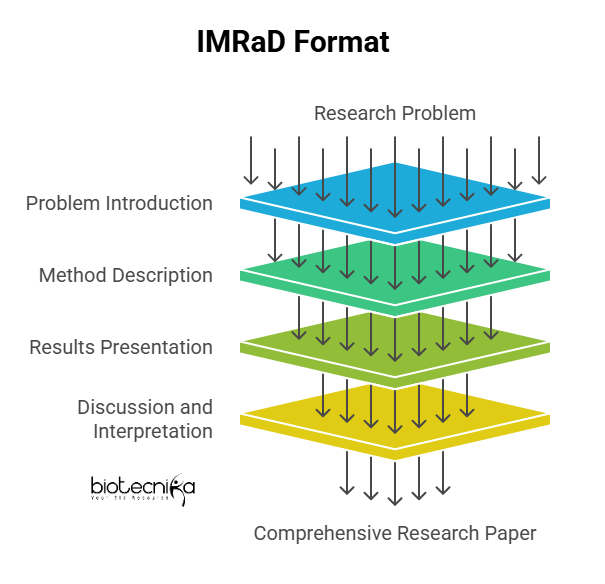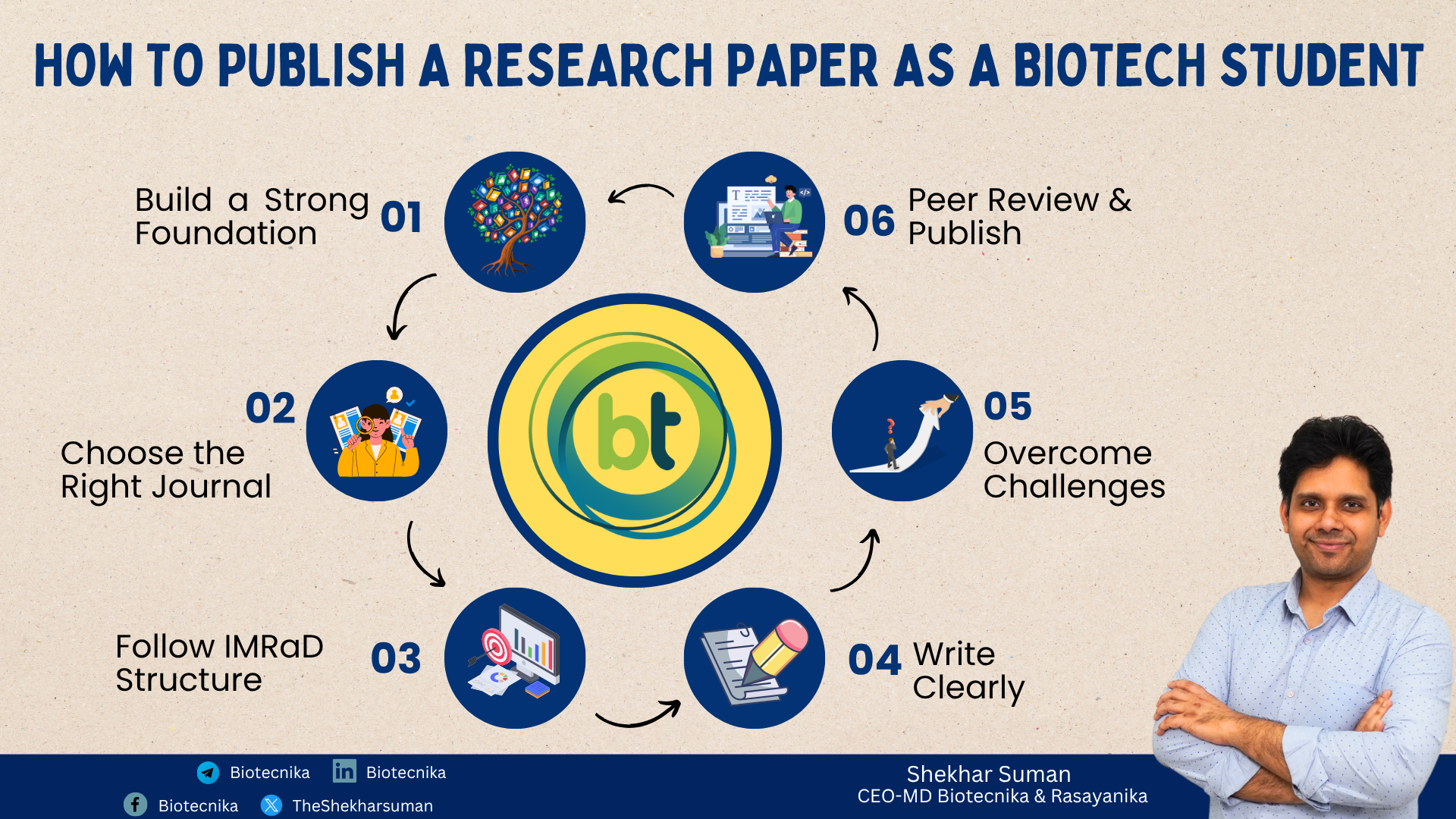Table of Contents
How to Publish a Research Paper as a Biotech Student?
You spent months pipetting solutions and running gel electrophoresis. You analyzed results and stayed up late to finish your lab report. Your biotech project has real data, and you might have exciting results. What next? If you’re wondering how to publish research paper findings in a respected journal, the first step is understanding the right methods to share your work with the scientific community.
What if your hard work could go beyond your lab bench? What if your findings could reach scientists worldwide? This could spark new curiosity and shape future biotech research. That’s exactly what publishing a research paper can do. Looking to publish your research in a peer-reviewed journal while still in school?
Some students think only PhD holders or seasoned researchers can publish in biotechnology. But that’s a myth. Recently, undergraduate and postgraduate students have published more in peer-reviewed journals.
If you want to publish a biotech research paper, this article will guide you through the steps. Are you
planning to publish your first research article, or are you curious about how it works? This article will simplify the journey and help you begin.Let’s turn your student research into something bigger: a peer-reviewed research paper.
Why It Matters to Publish a Research Paper in Biotechnology
Every year, researchers publish thousands of research papers. But have you ever thought about why publishing these papers is essential? In the world of biotech, research evolves at a rapid pace. Students who share new findings, no matter how small, join the global conversation.
By publishing, you can:
- Showcase your research skills to your future employers or panel members.
- Build credibility in the scientific community.
- Learn how to structure and defend scientific ideas.
- Make your findings available to the scientific community so that they can build upon them.
And most importantly, a published paper shows how you can think critically, work independently yet collaboratively, and communicate your thoughts. These are the top 3 skills every biotech professional must have.
Step 1: Start with a Strong Foundation
Before you begin your scientific journey and write anything, you need a solid foundation. To build this foundation, you can seek guidance from your mentors and supervisors. They can be your faculty member or PhD students. They will help you:
- Define a research question
- Design experiments and protocols
- Learn lab techniques and software tools.
- Analyse and interpret data accurately.
List of Biotech Project Ideas in 2025:
When choosing a project, aim for something feasible within your resources and time frame, but also unique enough to make a real contribution. Here are some ideas:
1. Medical & Pharmaceutical Biotechnology
- Designing and evaluating sustained-release drug delivery systems using biodegradable polymers.
- Developing a cost-effective CRISPR-Cas9 delivery method in yeast or bacteria for gene editing experiments.
- Screening medicinal plant extracts for anti-cancer or anti-microbial properties.
2. Industrial & Environmental Biotechnology
- Studying antimicrobial resistance patterns in wastewater bacterial isolates.
- Optimizing bioethanol production from agricultural waste using engineered microbes.
- Developing biodegradable packaging materials from microbial or plant-based biopolymers.
3. Food & Agricultural Biotechnology
- Creating fortified probiotics with enhanced gut health benefits.
- Studying fermentation patterns in genetically modified microbes for food applications.
- Using molecular markers to identify drought-tolerant crop varieties.
4. Plant Biotechnology
- Developing plant tissue culture protocols for endangered or rare species conservation.
- Engineering plants for enhanced nutritional value (e.g., increased vitamin content).
5. Computational & Bioinformatics-Based Projects
- Predicting protein–ligand interactions using molecular docking and simulation tools.
- Comparative genomics analysis of pathogen strains to identify vaccine targets.
- Building a gene expression analysis pipeline for publicly available RNA-seq datasets.
6. Synthetic Biology & Emerging Fields
- Designing a biosensor for rapid detection of water contaminants using synthetic circuits.
- Creating engineered microbial consortia for plastic degradation.
Step 2: Choose the Right Journal
Before you publish research paper for Biotech, it’s essential to select a journal that aligns with your research topic. The most critical step in the publication process is selecting the right journal that aligns with your topic and vision. Don’t wait until you have written the paper. Choose a journal first, read the author’s guidelines, and then start writing the paper. This will help you in meeting their structure and expectations.
Looking to Work on Projects & Publish Papers?
AI ML in Bioinformatics & Computational Biology Industrial Training Program With Project Work + Paper Publication Assistance is your answer!
Here’s a quick comparison of peer-reviewed journals in biotechnology:
Examples of Journals to Publish Research Paper for Biotech
| Journal Name | Focus Area | Open Access | Beginner-
Friendly |
| BMC Biotechnology | Molecular biology, genetic engineering, etc. | Yes | Yes |
| Journal of Biotechnology | Industrial, environmental, and medical biotech | Partial | Moderate |
| Biotechnology Reports | Short papers with new data or techniques | Yes | Yes |
| Biotechnology Advances | Comprehensive reviews and original articles | No | No
(Highly selective) |
| Indian Journal of Biotechnology | Biotech research from Indian institutions | Partial | Yes |
Tip: Always check the “Aims and Scope” section of a journal’s website to confirm your research is a good fit.
Step 3: Structure Your Paper (IMRaD Format)
To publish research paper for Biotech successfully, following the IMRaD format can increase your chances of acceptance. Most scientific journals prefer this layout because it helps readers quickly understand the purpose, process, and findings of your research.
IMRaD stands for Introduction, Methods, Results, and Discussion. Here’s an easy way to remember what each section should cover:
- In the Introduction, explain what the problem is and why it matters.
- In the Methods, describe precisely what you did, your experiments, materials, and protocols.
- In the Results, share what you found, using tables, figures, and clear data summaries.
- In the Discussion, interpret those results. What do they mean? Are there any limitations or unanswered questions?
Alongside these four main sections, don’t forget to add a concise abstract, a clear and informative title, and a well-formatted list of references. If you worked in a team, it’s also essential to include sections for acknowledgements and author contributions to credit everyone involved properly.
Following this structure not only makes your paper easier to read, but it also shows reviewers and editors that you understand the scientific process.
Step 4: Write with Clarity and Confidence
Writing a scientific paper for a peer-reviewed journal is not everyone’s cup of tea. Your manuscript should be concise, objective, and straightforward. While writing, avoid using overly complicated sentences or technical jargon without clear explanations.
A few helpful tips that will ease your work:
- Use past tense for Methods and Results.
- Use present tense for established facts in the Introduction.
- Avoid first-person (“I”/“we”) unless the journal guidelines allow it.
- Always cite your sources using tools like Zotero or Mendeley.
- Present data visually with graphs, tables, or figures for clarity.
And don’t forget to proofread your paper before submitting it. You can seek help from your mentor or a language expert to check your draft.
Step 5: Know the Common Challenges (And Beat Them)
Many students give up before they even submit their work. But knowing what to expect makes it easier to push through.
Common Challenges Students Face and How to Overcome Them
| Challenge | Solution |
| Lack of confidence in writing | Start with Methods & Results; get feedback early |
| Fear of rejection | Know that revision requests are normal, even for experienced scientists |
| Difficulty choosing a journal | Ask your mentor or search by keyword on the journal finder tools |
| Unclear research goal | Refine your question through literature review and discussions |
| Not enough data | Focus on one strong experiment rather than trying to do everything |
Step 6: Understand the Peer Review Process
After submission, your paper goes through peer review, where other researchers anonymously evaluate your work. They will verify the originality of your research, the clarity of your results, and the reproducibility of your findings. Additionally, they will ascertain whether your interpretation appears scientific or not.
After all the analysis, they will provide feedback to the publication. If accepted with revisions, take the feedback seriously. Address every point respectfully. Explain your changes respectfully in your response letter to publish research paper for Biotech
Sometimes, your paper may be rejected, but that’s part of the process. You can always revise and submit to another journal.
Step 7: Stay Ethical
Ethics is the backbone of scientific publishing. You must avoid plagiarism. Always write in your own words. Credit co-authors and mentors appropriately. Report data honestly, even if the results are not what you expected. And remember, do not submit to multiple journals at once.
When you publish research paper for Biotech ethically, your reputation will be built in the long run. Many biotech students get flagged during plagiarism checks simply because they copy too much text from previous reports. Even when reusing your writing (from a thesis, for example), paraphrase and cite yourself properly.
Final Encouragement: Your Voice Matters
It’s okay to feel nervous while publishing your first research paper for biotech. You may think you are not “experienced enough,” or that your data is not “good enough,” but remember every published scientist once stood exactly where you are.
Biotech needs fresh ideas. Whether it’s a better fermentation protocol or a greener way for insulin production, biotech is filled with opportunities. If you have worked hard and followed the scientific methods, your insights are worth sharing.
Begin with what you have. Take the first step today. And remember, even if your first attempt doesn’t work out, it’s all part of the learning curve.



































Hlo good morning sir
Sir ek btech biotech student ki future opportunities kya kya ho sakti hai
btech biotech (ug) ke baad kon kon se field me batter placement ho sakta hai (field & amount/annum)
Dear sir very useful video.